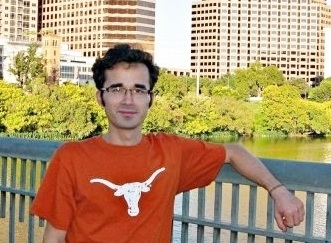November 22-2013
by Warren L. Nelson
The latest IAEA inspection report says Iran is continuing to enrich at the same speed as in the past, but has halted the installation of new centrifuges and limited the construction work done at the incomplete reactor at Arak.
That dramatic reversal of its expansion effort was seen by many as a signal of Iran’s willingness to make a deal with the Big Six.
The last previous inspection was completed August 17, two weeks after President Rohani took office. So the changes of the last quarter are attributed to him, although Supreme Leader Ali Khamenehi would have had to approve the changes.
The IAEA report, released last Thursday, covers the last three months. It says Iran has added only four additional centrifuges to the 19,505 it had installed as of three months ago, effectively suspending the rapid expansion that started in late 2011 when the IAEA counted 8,000 centrifuges. Iran had been installing an average of more than 1,500 centrifuges every quarter from then until it plummeted to just four this past quarter.
The quarterly report by the inspectors of the International Atomic Energy Agency (IAEA) also said that construction work has largely halted at the heavy water reactor near Arak with no major components being installed there in the last quarter. Iran originally planned to finish the plant in the first quarter of 2014, but earlier this year announced that the plant’s opening would be delayed indefinitely. With little construction work this past quarter, the opening of the plant is likely delayed still further.
In Tehran, the regime responded to the IAEA report by simply denying what it said—although, in traditional style, it blamed Western news agencies for circulating falsehoods. “The news reports released about the halt of our country’s nuclear activities are not true,” said Foreign Ministry spokeswoman Marziyeh Afkham.
Arak has become a major issue in the Big Six talks with Iran in Geneva, with France insisting that all work should end there while the talks continue. Iran seems to have anticipated that demand and halted work three months before France spoke up.
The report shows that Iran is continuing to enrich but at the same pace it has been enriching since February 2012. And, oddly, it shows that, despite doubling the number of centrifuges the past two years, it has left those new centrifuges sitting idle. In February of 2012, out of almost 10,000 centrifuges installed, almost 10,000 were spinning and enriching. Today, out of almost 20,000 installed, it has 10,000 spinning and enriching.
Iran has given no explanation for why it keeps installing centrifuges it doesn’t put to use.
Therefore, while the halt to further centrifuge installation was widely viewed as a sign of Iran’s willingness to accede to the West’s desire for a slowdown, the fact remains that the Islamic Republic could rapidly expand enrichment tomorrow since half of its installed centrifuges are unused.
Another major concern has been Iran’s stock of uranium enriched to 20 percent purity, since it would only take a short time to further enrich 20 percent uranium to the 90 percent needed for weapons. Iran continues to enrich to 20 percent, but it continues to convert much of that into fuel plates for the Tehran reactor, thus limiting what it has available for potential weapons use.
This is curious. Iran is understood to have enough fuel plates to keep the Tehran reactor going for more than a decade, so it isn’t clear why it is continuing to stock up more fuel for that reactor. Many analysts say it would be far more rational for Iran to suspend 20 percent enrichment altogether. Iran has not explained why it continues to make any 20 percent enriched uranium.
Israeli Prime Minister Binyamin Netanyahu made a big issue of the 20 percent stockpile in his address to the UN General Assembly in September 2012. He said his “red line” was a stock of 20 percent uranium exceeding 250 kilograms, enough for one nuclear bomb.
Many analysts have dismissed his “red line” as simplistic. But Iran has respected it by converting most of its 20 percent uranium to uranium metal for fuel plates, making it difficult to ever use in any weapons program. In the last quarter, only 10 kilos of the 20 percent uranium was not converted and the stock that worried Netanyahu grew to 196 kilos, far below his “red line.” (See chart on page one.)
Netanyahu recently dismissed his own red line, however, saying it is no longer applicable because Iran is installing more modern centrifuges and could produce weapons grade enriched uranium faster with those new IR-2m centrifuges starting with uranium enriched only to 3.5 percent. The IAEA report says none of those IR-2m centrifuges are currently spinning and enriching.
The key item being watched for the Arak reactor is the fuel assemblies, of which 150 are needed to fill Arak. Iran had completed 10 as of three months ago and no more were completed in the last quarter.























